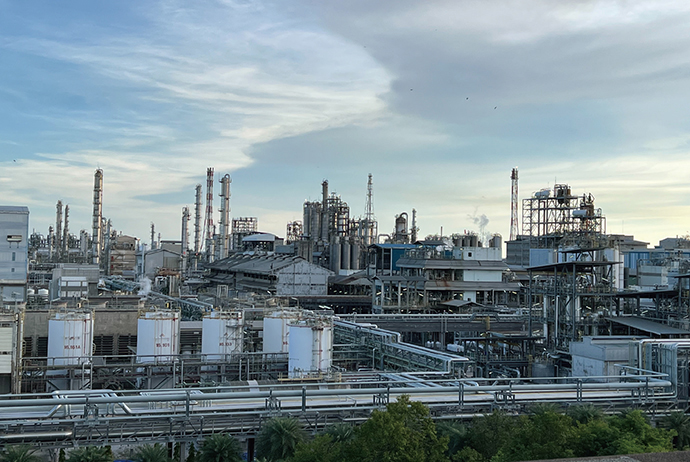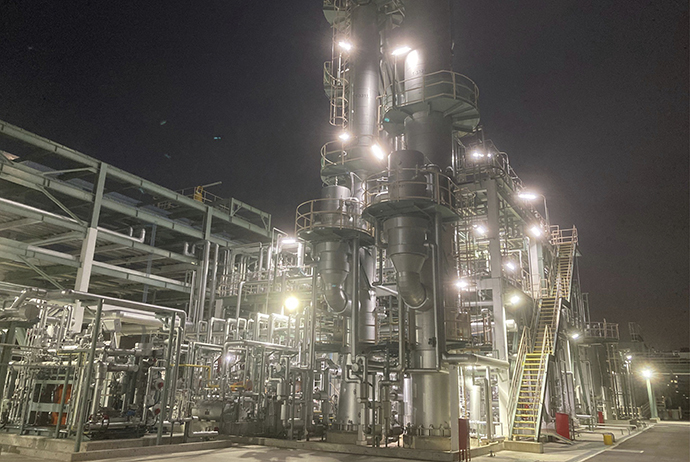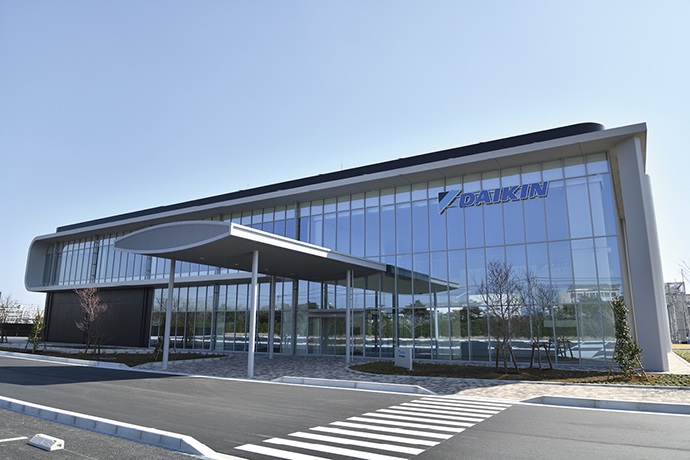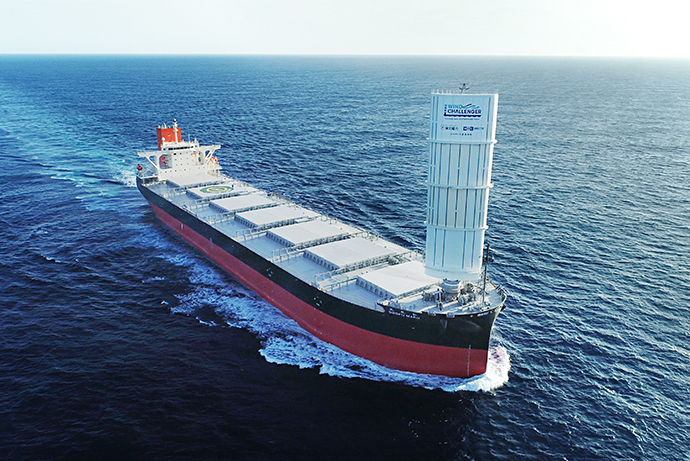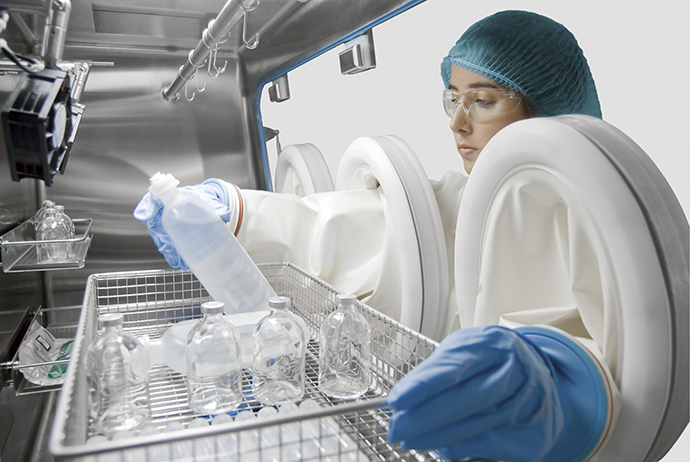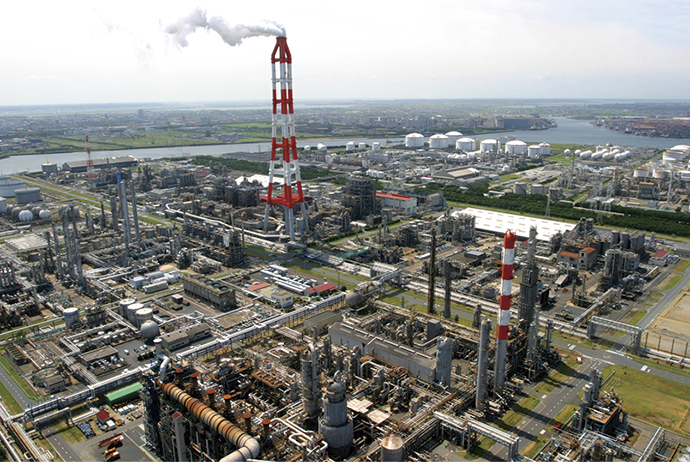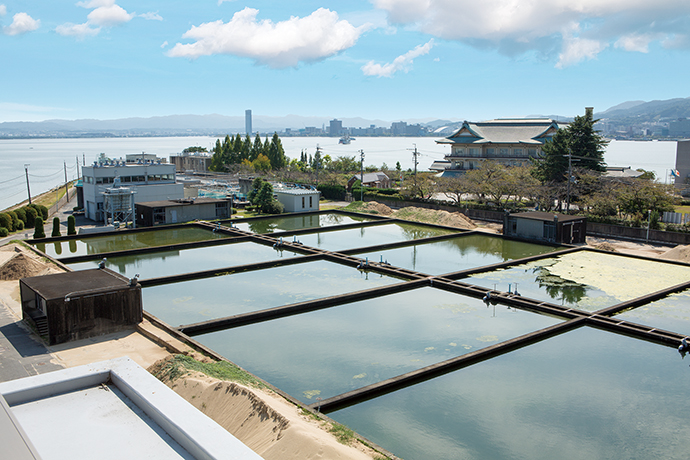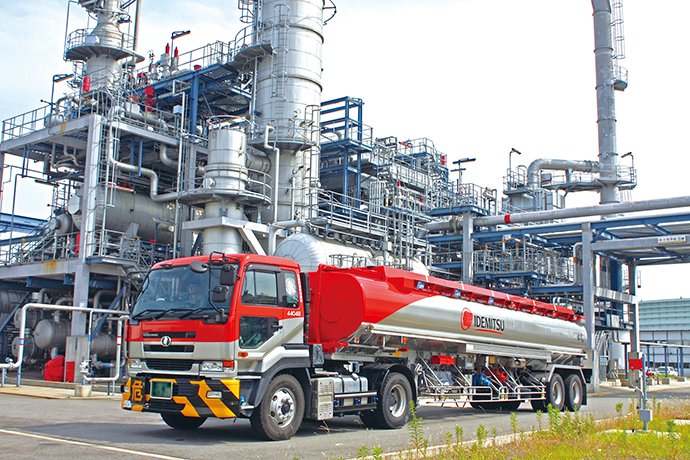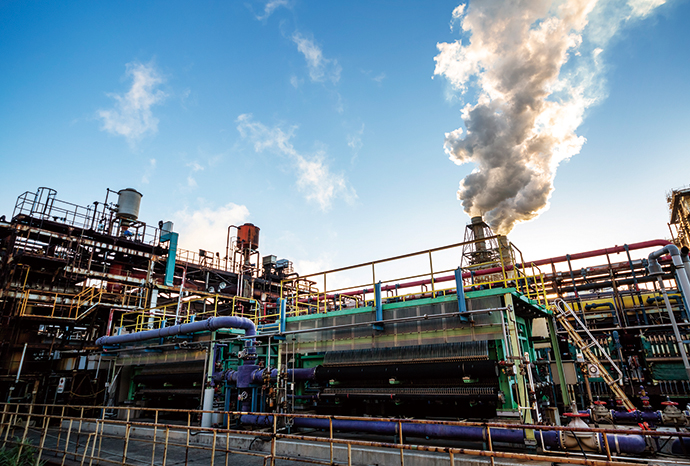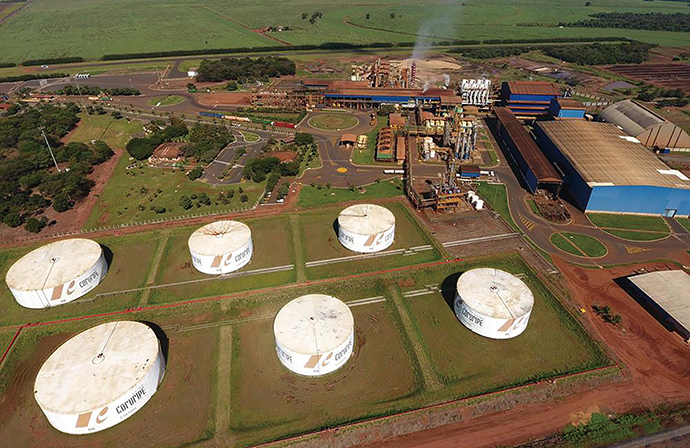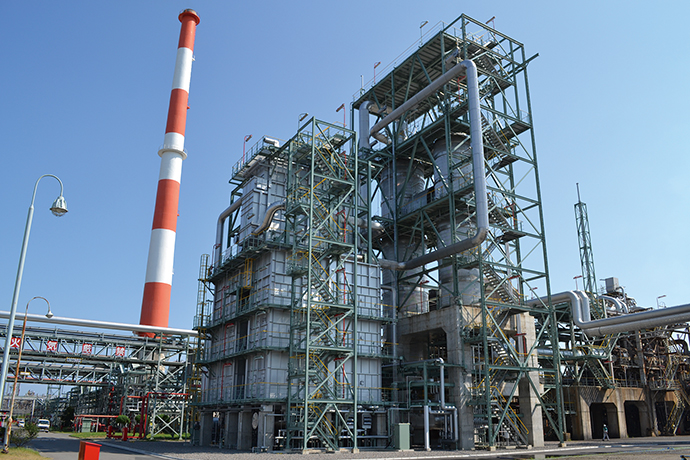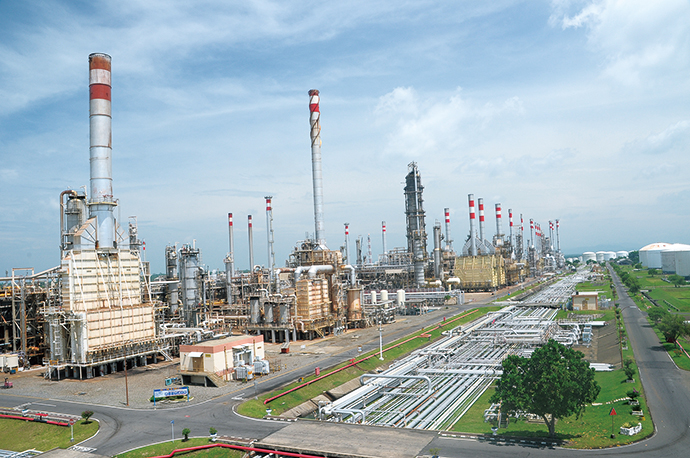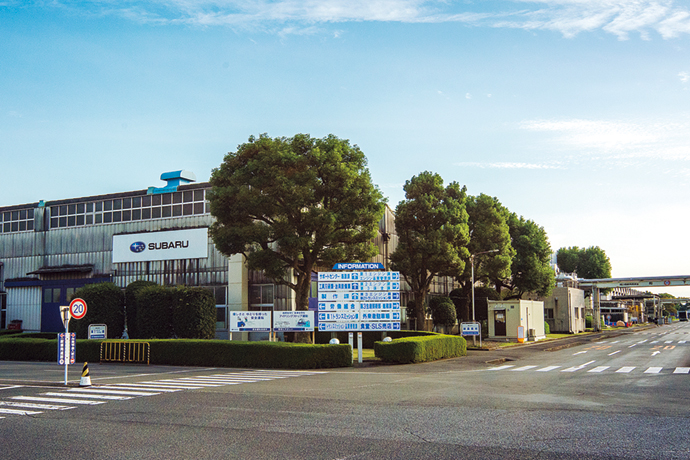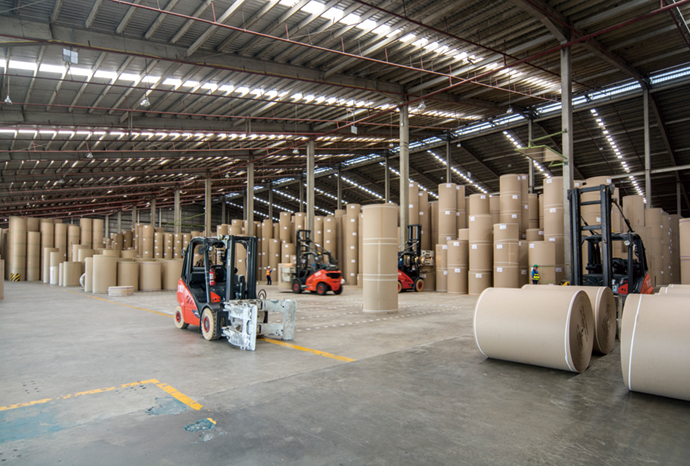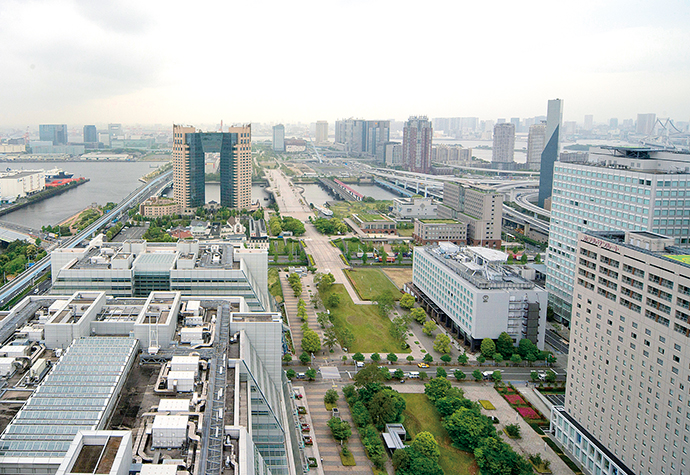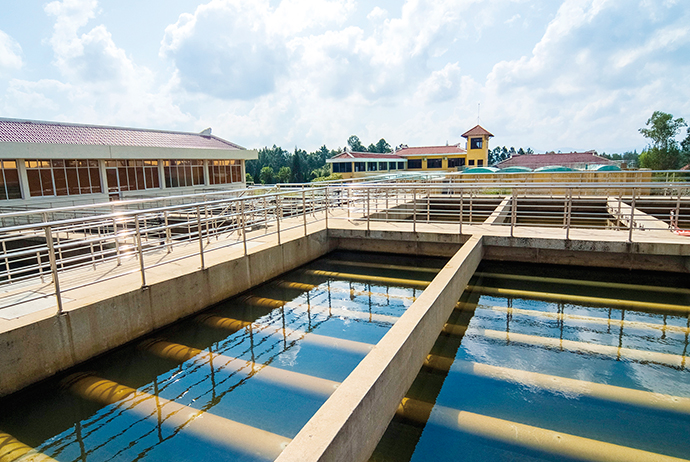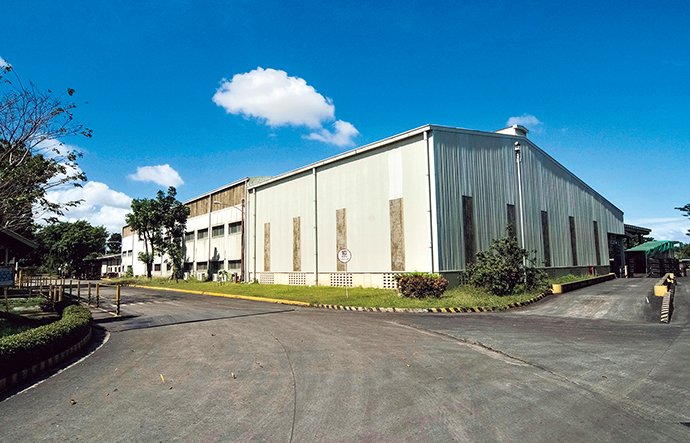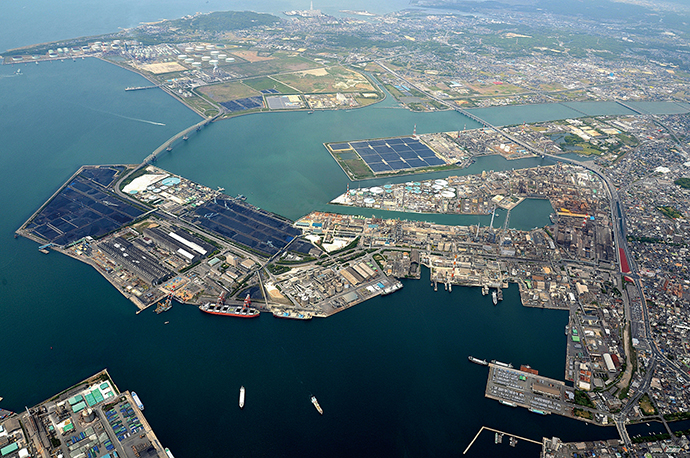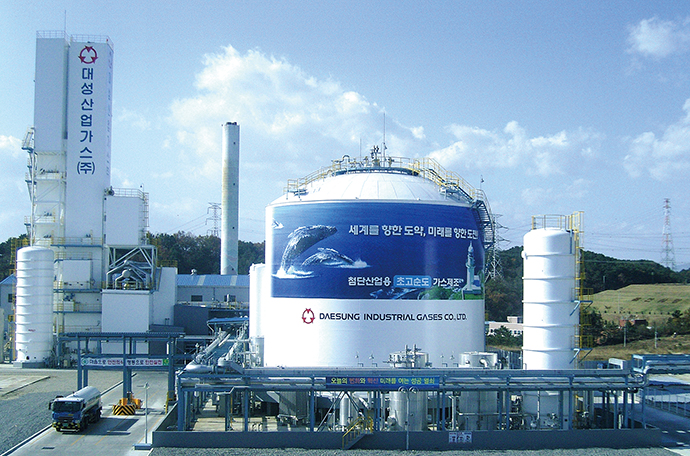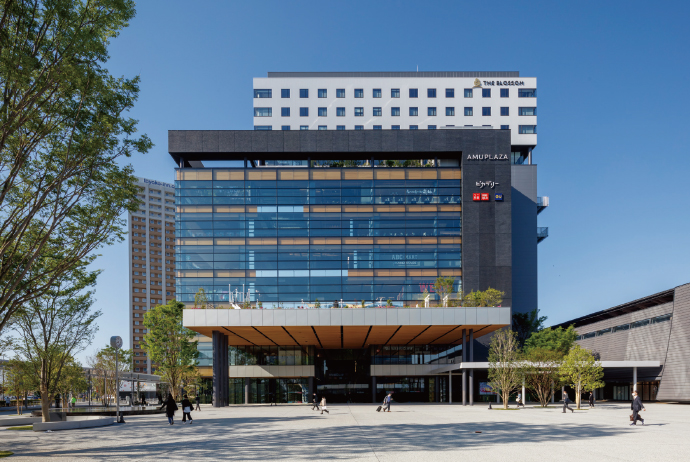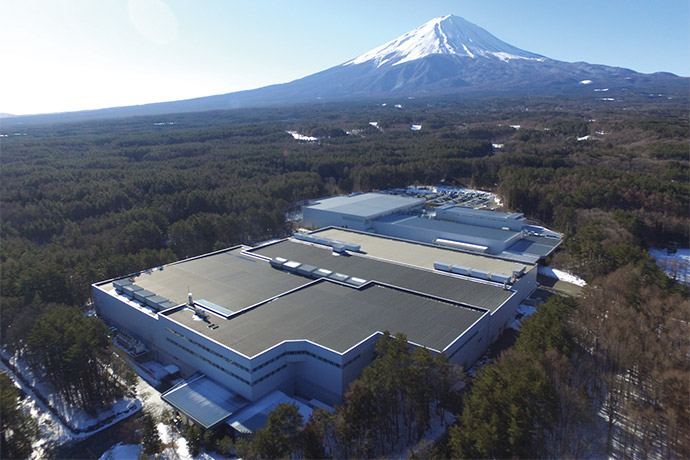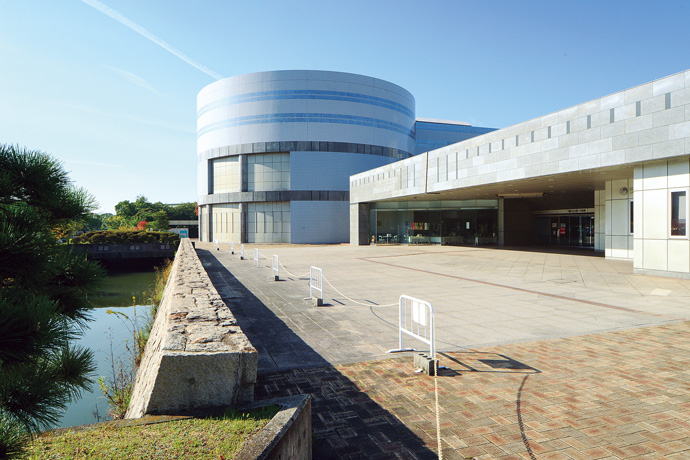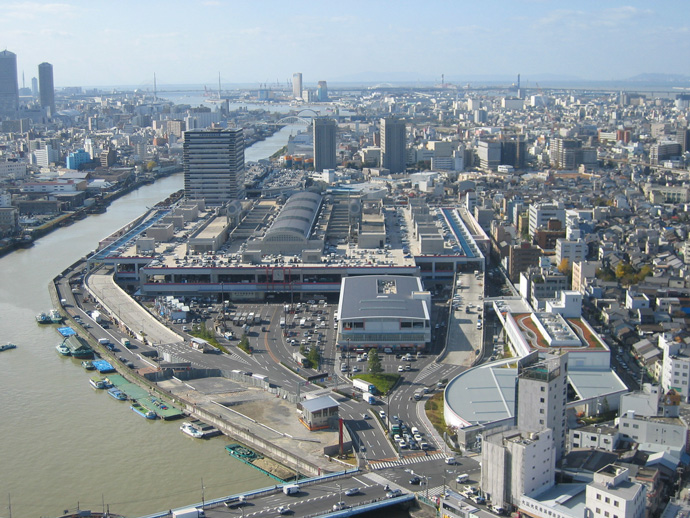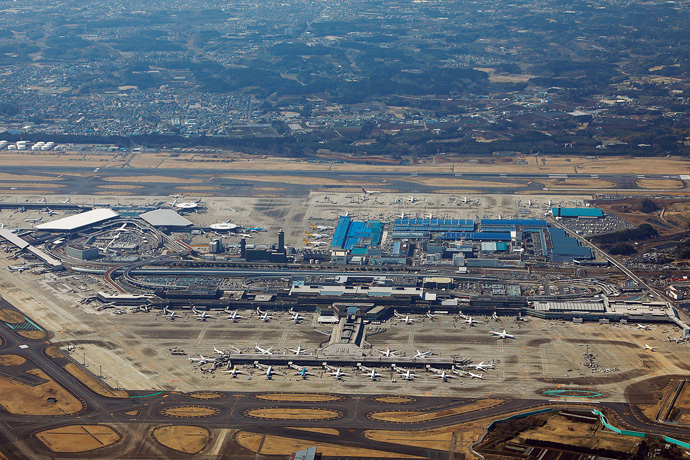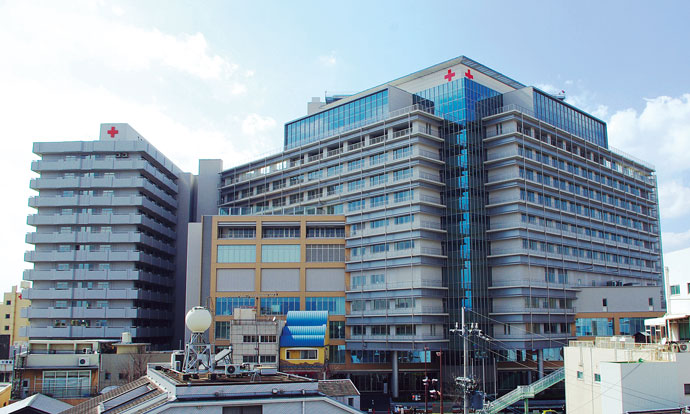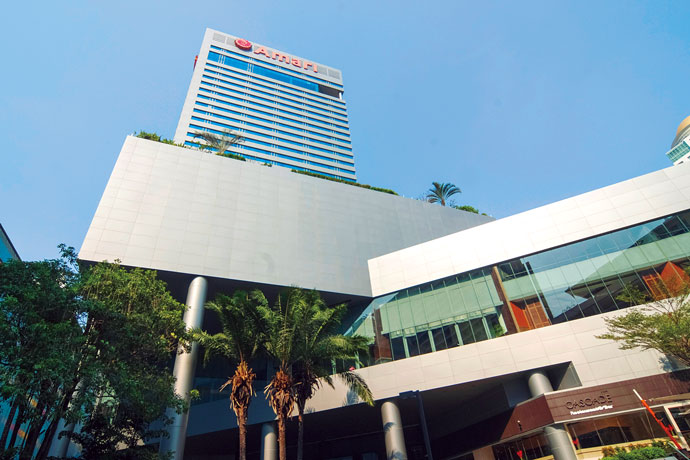HOKKO CHEMICAL INDUSTRY CO., LTD. Okayama Factory
HOKKO CHEMICAL INDUSTRY CO., LTD. promotes energy conservation at its Okayama Factory, the main production base for its fine chemical products, as part of its efforts to contribute to the realization of a sustainable society and achieve the SDGs. While laying the groundwork for introducing initiatives that require large-scale investment, such as fuel conversion, Hokko has been devising and implementing various energy conservation measures utilizing existing equipment, centering on the visualization of energy consumption by an energy management system (EMS) to eliminate the wasteful use of energy, and is making steady progress.
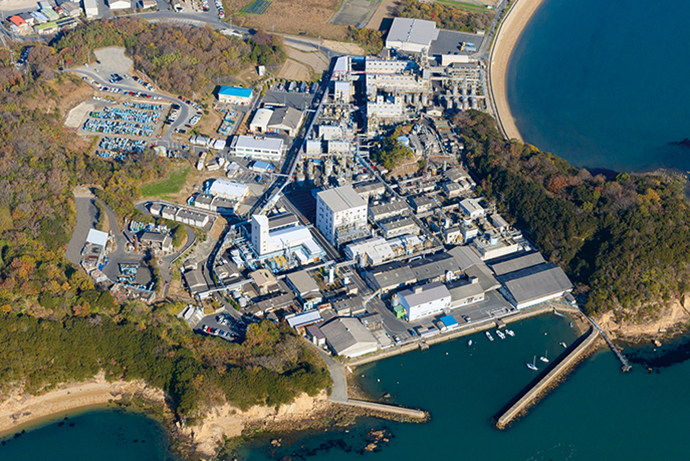
Factories and Plants Chemicals Energy Efficiency Energy Management Cost Reduction Reliable Operation Operation Improvement Industrial Automation Control and Monitoring Systems and Software
Products/Services Provided

Acceleration of energy conservation activities to contribute to the realization of a sustainable society
As a chemical manufacturer, Hokko runs manufacturing and marketing businesses for agrochemical and fine chemical products. Especially in its fine chemicals business, Hokko has been developing and providing various products, taking advantage of the organometallic compound synthesis technology it has cultivated over the many years since its foundation in 1950. Its fine chemical products range from electronic materials used in semiconductors, organic catalysts, pharmaceutical ingredients, and intermediates, to functional macromolecular monomers, which have been making contributions across a wide range of industries. Hokko’s main production base for such fine chemical products is the Okayama Factory in Tamano, Okayama, located in the southwest of Honshu, Japan. It has a total of nine synthesis plants of various sizes and intermediate experiment facilities in operation. Based on its longterm business plan formulated in 2021, Hokko has been actively promoting energy conservation activities at its production sites toward achieving the SDGs.
“Other than the Okayama Factory, our company has the Niigata Factory and Hokkaido Factory that produce agrochemicals in Japan. However, the Okayama Factory, which mainly produces fine chemical products, uses a substantially large amount of energy compared to those other two factories, and that puts it in the position of having to lead the whole company in energy conservation activities,” says Satoshi Tsujimura, the general manager of the Fine Chemicals Production Department.
“As for energy conservation, we have been working on studies and preparations for a fuel conversion from heavy oil to gas since the autumn of 2019 from a long-term perspective. Along with that, we have always wanted to challenge ourselves in achieving maximum possible energy conservation for equipment that is currently in use,” says Takashi Watanabe, the manager of the Equipment Team in the Fine Chemicals Production Department.
So, the Okayama Factory requested Azbil do an on-site investigation on the state of its energy use. In response, Azbil conducted extensive research at the factory to find if any production equipment was using an excessive amount of energy.
Supplying steam as necessary to optimize boiler operation
Based on the results of the on-site investigation, the Okayama Factory introduced Azbil’s energy management and analysis system EneSCOPE™ as an energy management system (EMS) in October 2021, in order to visualize problem areas such as the usage of steam and electricity. Starting from the key areas visualized by this system, the Okayama Factory took specific improvement measures one after another, and spread the initiatives throughout the factory.
The Okayama Factory uses ten heavy oil-fired boilers to supply steam to its synthesis plants. Although the amount of steam needed for production varies from plant to plant, steam was supplied to all plants at a fixed high pressure, resulting in an excessive supply to some plants. To address the problem, Azbil suggested measuring the terminal pressure of steam at each synthesis plant and controlling (reducing) the pressure of steam to supply the minimum amount of steam necessary based on the amount requested by each production site. This enabled a reduction in the amount of steam generated by the boilers. In addition, in order to reduce loss of energy due to heat radiation from the pipes supplying steam for two large-scale synthesis plants at the Okayama Factory, two pipes that had been laid separately were consolidated into one.
“Consolidating long steam pipes into one can significantly reduce heat radiation loss. That definitely achieves another form of energy conservation,” says Mr. Watanabe.
The introduction of the EMS and steam pressure control lessened pressure variations in steam, and stabilized the combustion in the boilers. As a result, the evaporation ratio (boiler efficiency index) improved by 6.2% compared to before the introduction of the EMS, and the consumption of heavy oil was reduced.
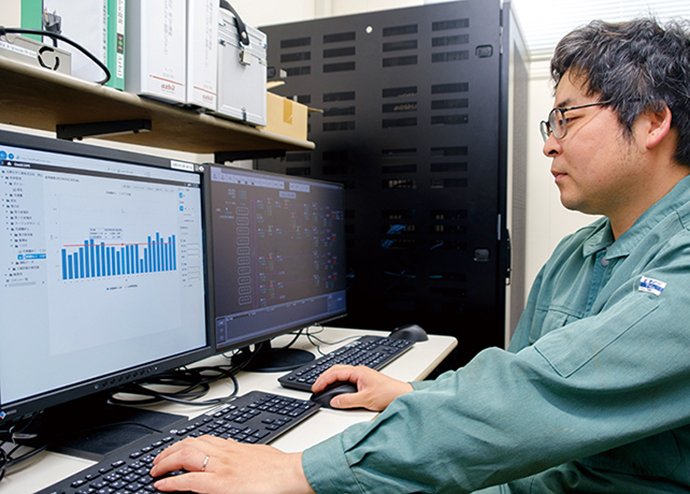
Monitor screen of EneSCOPE for EMS (left) and the Harmonas-DEO harmonized automation system introduced as the DCS*1 (right), installed in the server room.
Early detection of deterioration in chiller performance to achieve both energy conservation and production continuity
The Okayama Factory then embarked on improving the operation of the chiller. At the factory, a chiller is always running to generate chilled water to cool chemical reactors.*2 They used to confirm the operation status of the chiller by checking the temperature of chilled water and cooling water during on-site inspection rounds. However, after the introduction of the EMS, it has become possible for them to monitor the detailed operation status of the chiller without having to go to the site. Moreover, it has become possible to ascertain the operational efficiency of the chiller by its coefficient of performance (COP), which is the cooling capacity per unit of power consumption, that is, how much chilled water is produced for the amount of power used. In addition, the COP visualizes deterioration in the cooling capacity, enabling the estimation of adhesion and accumulation of scale*3 on chilled water pipes that occurs while running the chiller. The EMS not only saves energy but may also help with reducing downtime of production equipment by addressing potential issues before they become apparent.
“Before, we cleaned the chiller only after its cooling capacity had become poor and it had stopped due to an error. If we systematically stop production equipment and clean the chiller through the visualization of COP, that will prevent equipment from suddenly shutting down and stop production from being affected,” says Tatsunori Miyaaki, a member of the Equipment Team in the Fine Chemicals Production Department.
In each synthesis plant of the Okayama Factory, graphs of the EMS are always displayed on a monitor, at a location where all personnel can easily see them. This is an initiative the factory came up with in a bid for its workers to naturally foster awareness of energy conservation.
“Through the series of initiatives, including the visualization of energy consumption trends by the EMS, the awareness of energy conservation is steadily taking root at our production sites. We believe this is one of the major achievements of the energy conservation measures we adopted,” says Mr. Watanabe.
“Our energy conservation measures have just started to get on track. Our plan is to further expand the visualization by the EMS, identify wasteful energy consumption lurking in our production sites, steadily resolve each of the issues, and achieve much greater success,” says Mr. Tsujimura.
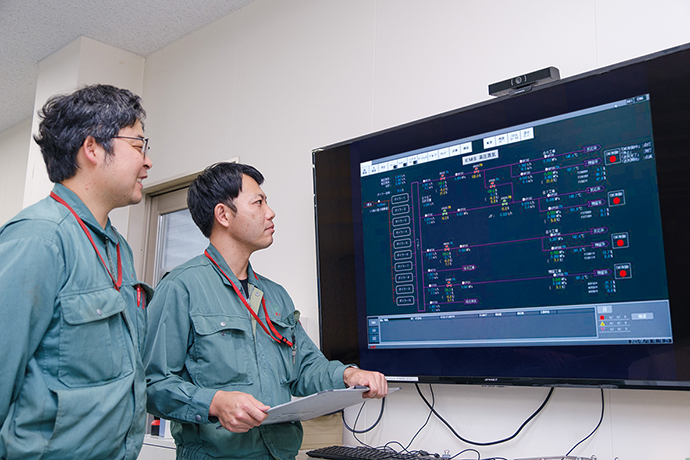
The monitoring screen of Harmonas-DEO is always displayed on a large monitor installed at a meeting space of an office. Managers of the Manufacturing Department and others use it to check the state of manufacturing when they visit the office.
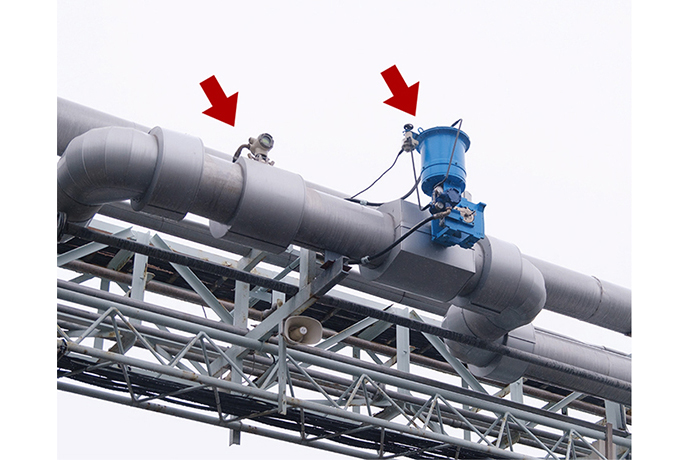
Eccentric rotary control valve FloWing™ for controlling the pressure of steam immediately after it is sent out of the boiler (right) and steam flowmeter STEAMcube™ (left).
Harmonas-DEO, EneSCOPE, FloWing, and STEAMcube are trademarks of Azbil Corporation in Japan.
glossary
*1 Distributed Control System
A dedicated system for monitoring and controlling the manufacturing processes and production equipment of plants and factories. To achieve an even distribution of load, the DCS manages the functions of each device over a network, resulting in safety and excellent maintainability.
*2 Chemical reactor
Equipment in which chemical reactions take place, used in the chemical substance manufacturing process at petrochemical plants.
*3 Scale
A solid created when substances such as calcium, magnesium, and other metals dissolved in water adhere to pipes, accumulate, and solidify.
Learn about the customer
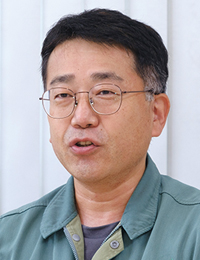
Fine Chemicals
Production Department
Satoshi
Tsujimura
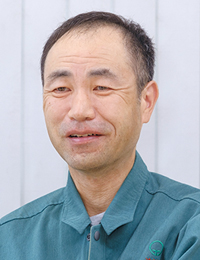
Engineering and
Maintenance Team
Fine Chemicals
Production Department
Takashi
Watanabe
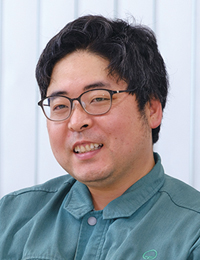
Maintenance Team
Fine Chemicals
Production Department
Tatsunori
Miyaaki
HOKKO CHEMICAL INDUSTRY CO., LTD. Okayama Factory
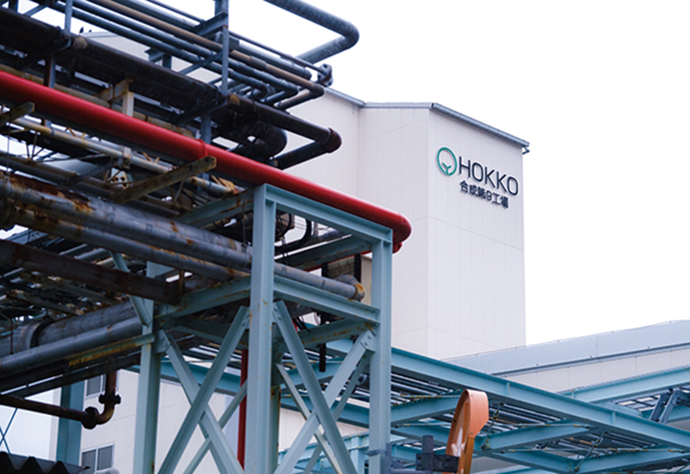
HOKKO CHEMICAL INDUSTRY CO., LTD., Okayama Factory
- Location:402 Muneage, Tamano, Okayama Prefecture
- Start of operation:1953
- Products:Pharmaceutical ingredients, fine ceramic ingredients, catalysts for organic synthesis reactions, etc.
This article was published in October 2024.

